Introducing kids to coding can be a good initiative. Teach them to code, as it sparks creativity and problem-solving. Kids today are so intelligent; they can create their own computer games and other tools. It’s about inspiring young minds to explore, learn, and create, nurturing their passion for innovation and discovery. Coding offers numerous advantages for young learners, opening doors to a world of possibilities. It helps students develop analytical skills and also prepares them for a technologically advanced future. Here we will discuss how to introduce coding to the next generation.
Benefits of Teaching Kids to Code
Equipping children with the resources to learn to code sets them up for success in today’s technology-driven society.
Empowering Problem Solvers
Teaching kids to code is an investment in their future success as critical thinkers and problem solvers. Coding helps them solve complex problems into manageable steps. It also gives them the confidence to face real-world challenges.
Boosting Creativity
Coding is like an open canvas for kids’ imagination.They can create, plan , and come up with new ideas on their own. They are free to use their ideas to make anything, from characters for video games to whole websites.
Building Resilience
Coding involves plenty of trial and error. Kids who learn to code develop qualities like resilience and persistence, which are crucial for success in any field. These skills go beyond coding, shaping them as resilient and determined individuals.
Popular Coding Languages for Kids
Starting with the right language is essential. People today like to use these computer languages because they are simple to learn and fun for kids to use:
Python
Python is an easy and yet modern programming language to start with when teaching kids to code. Its simplicity and clear syntax make it a great choice. Kids can easily grasp Python and use it to create their games, stories, and more. It’s a language designed for young learners to dive into coding with ease and fun.
Scratch
Scratch is a visual computer language that kids can use to make a creative playground. Kids may create their own animations, games, and stories using the program’s colorful blocks and simple drag-and-drop interface. Scratch encourages creativity and teaches the basics of writing without being too hard to understand.
JavaScript
JavaScript is a well-liked option for slightly older children who want to learn more about web development. It enables them to add interactive aspects to web pages and make them more engaging. They can make dynamic websites and games as they get more fluency in the language.
Coding Apps for Children
In today’s world, where smartphones and tablets are a big part of kids’ lives, coding apps offer an exciting gateway into the world of programming. These apps make learning not only fun but also interactive.
Tynker: Creative Coding Adventures
Tynker is an app that offers a range of coding challenges and projects, allowing kids to create their games, animations, and stories. It’s like a playground for budding coders, where they learn while having a blast.
Lightbot: Puzzle-Based Learning
Lightbot introduces coding concepts through puzzles. Kids guide a friendly robot through mazes by giving precise instructions. It’s a fantastic way to teach them the logic of coding in an entertaining way.
Kodable: Coding for Younger Kids
Kodable is perfect for younger children, offering a playful introduction to coding concepts. Kids guide a cute fuzzball through a series of mazes, all while learning coding fundamentals.
Tips for Teaching Kids to Code
Learning code can be a fulfilling experience for both you and your child. It’s about making learning fun while nurturing their creativity, curiosity, and problem-solving abilities.
Patience and Exploration
Be patient and let your child explore at their own pace. Coding is about discovery, so allow them to experiment and make mistakes. It’s a journey, not a race.
Encourage Creativity
Coding is an art. Encourage your child to express their creativity through their projects. Let them design their games, animations, or stories.
Independent Problem Solving
Help your child work through coding problems independently. Motivate kids to analyze issues, apply reason, and come up with solutions on their own.
Celebrate Small Wins
Celebrate every little achievement. Acknowledging their progress boosts their confidence and motivation.
Online Coding Courses for Kids
Online coding courses for kids are a convenient and engaging way to introduce young learners to the world of programming.
Interactive Learning
These courses offer interactive lessons, making coding an exciting adventure. Kids can learn at their own pace, solving coding challenges and creating projects that ignite their creativity.
Diverse Topics
Online courses cover a wide range of topics, allowing kids to explore and find their coding passion.
Flexible Schedules
Online courses provide flexibility, fitting into busy family routines. Kids can access lessons anytime, anywhere, making learning convenient and adaptable to their needs.
Parent Involvement
Some courses encourage parent involvement, allowing you to support your child’s learning journey. It’s an opportunity to bond while fostering their coding skills. You can get online courses on platforms like Coursera and edX
Coding Camps for Young Innovators
Coding camps are like a digital wonderland for young minds. Mostly, the leading mobile app development company sets the stage and provides a platform for thriving teens. One of the great things about coding camps is that kids learn with others, making new friends who share their passion. It’s a supportive and collaborative environment. These camps offer hands-on coding experiences. Kids get to work on real projects, from creating games to building websites, gaining practical skills that they can use right away. In addition to teaching coding, these camps create lifelong memories. Experiences range from tech challenges to group projects, and they’re all fascinating and interesting. Consider enrolling your child in a coding camp during holidays and watch them grow as young innovators,
Conclusion
Teaching youngsters to code is an investment in their future. It fosters creativity, problem-solving, and tech proficiency. There are many fun ways to code, from Python to Scratch to interactive programs. Code camps and online courses provide structure, while parent patience creates a friendly environment. As parents and educators, we can prepare the next generation for a digital world with unlimited possibilities.










